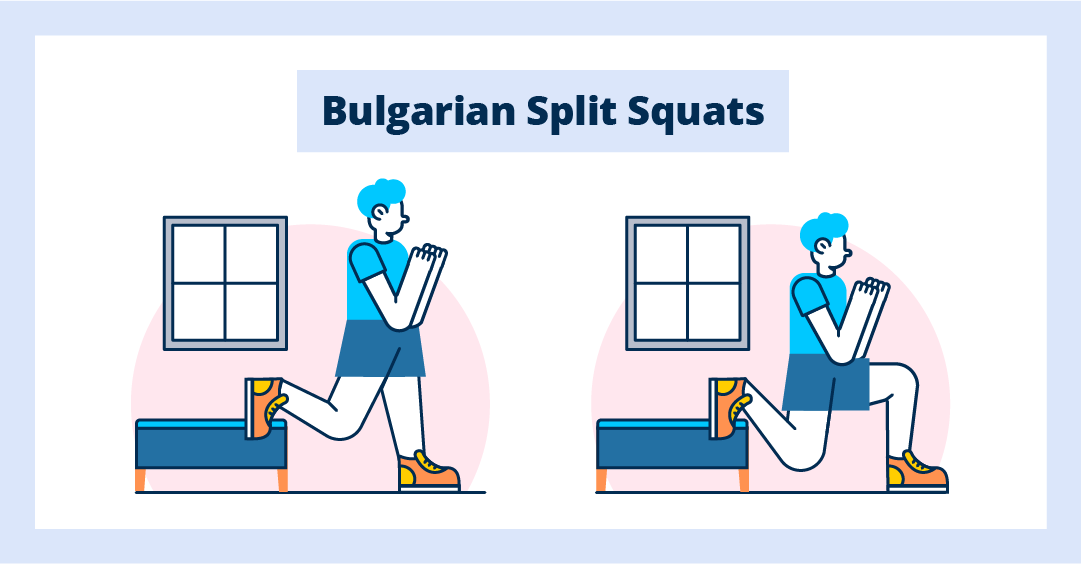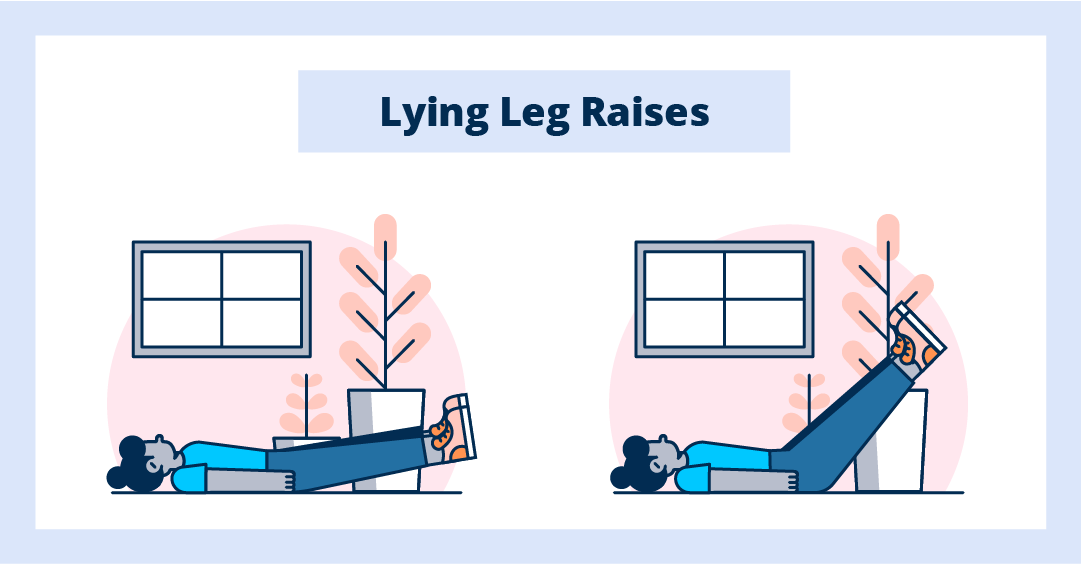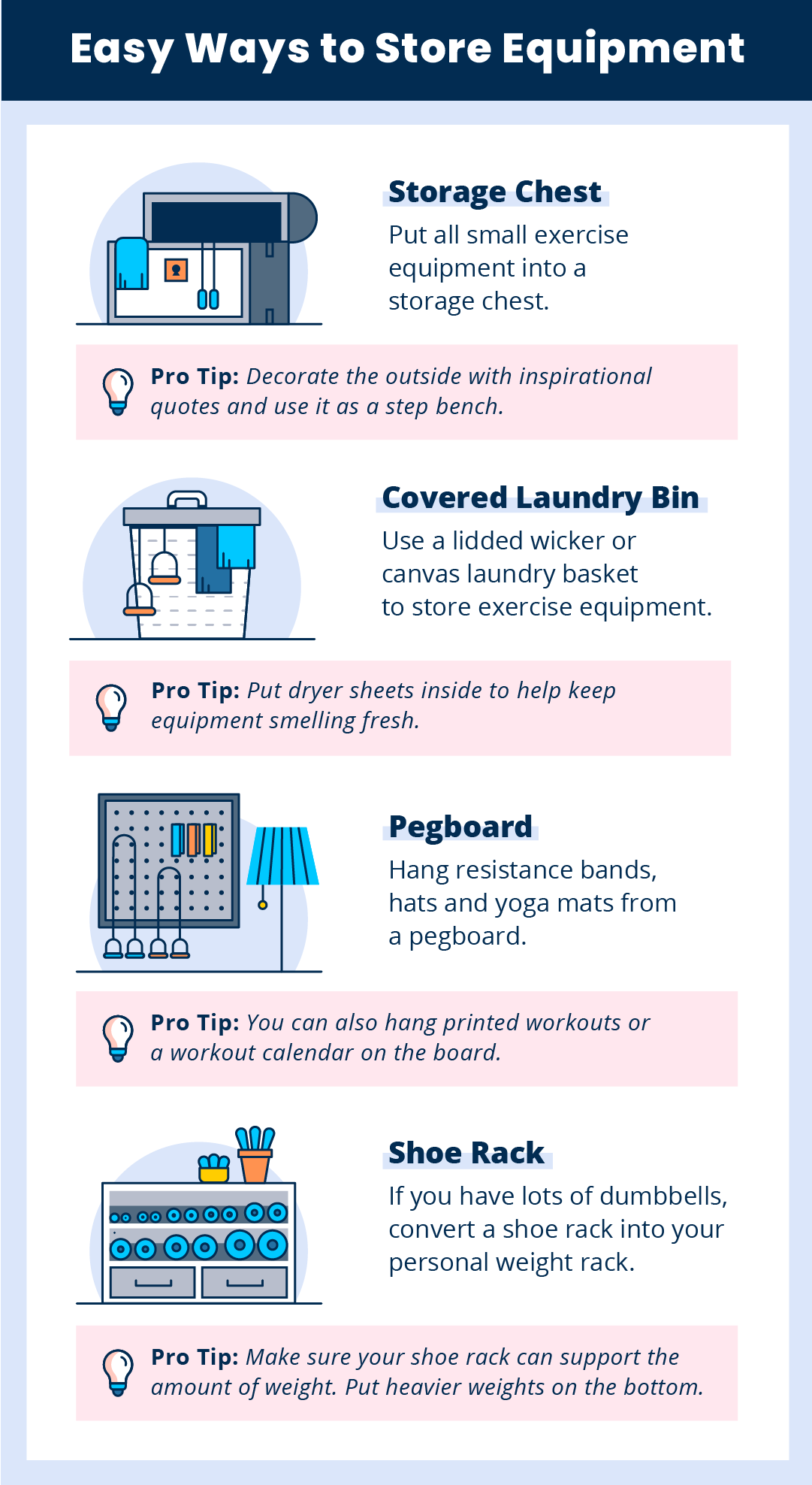14 min read
IRS Rules for Rental Property: Landlord Tax Guide for 2025
Staying compliant with IRS rules for rental property is a non-negotiable piece of the landlord puzzle. As we all know, Uncle Sam expects full transparency from...

Moving boxes and packing once a year isn’t the only time your body should get exercise. In fact, according to the CDC, “People who are physically active for about 150 minutes each week have a 33% lower risk of all-cause mortality than those who are physically inactive.”
It can be difficult to get on a regular workout schedule, especially if you’re renting far away from your workplace or a gym. Don’t worry though — we’re here to help because the only thing you should be sweating is your workout!
We’ve done the homework for you and listed 17 exercises you can do from the comfort of your rental space or wherever you might be. These exercises are quiet and won’t make your neighbors complain to management. You can also do them in small spaces, which minimizes the risk of damage and impacting your lease agreement.
Our guide documents the best apartment workout equipment and offers unique storage tips. And if you’re not sure about purchasing exercise equipment yet, no worries. We’ve also included household items you can strategically supplement for workout equipment.
Read the article below to begin your exercise journey or get a quick summary by viewing our infographic below.
Working out your arm muscles multiple times a week is a good way to build definition. Even better, you can confidently answer “yes” on job applications when they ask if you can lift objects more than 35 pounds. Here are the best arm exercises you can do at home.
Curls are a great way to get the blood flowing to your biceps and forearms. You can do curls with either dumbbells or barbells.
The weights can be either parallel or perpendicular to your body. You can also do curls sitting down or standing up.
Increase difficulty: While standing, put the metal or rubber ends of the weights together and curl both arms together in one motion.
Household alternative: Replace dumbbells with gallons of water or cans of food.
Tricep extensions are one of the best ways to target your triceps and your latissimus dorsi (lat) muscles. You can either sit or stand when doing this exercise. If standing, bend your knees a bit.
Increase difficulty: Do the same activity with one arm holding the dumbbell.
Household alternative: Replace dumbbells with gallons of water or laundry detergent.
Dips are another exercise that targets your triceps. However, they also work out the front deltoids on your shoulders and chest. You’ll need a sturdy elevated surface such as a chair or couch. If you’re using a chair, especially one with wheels, make sure it’s against a wall.
Increase difficulty: Place your hands closer, which will isolate your triceps more.
Household Alternative: If you don’t have a workout bench use a sturdy chair or couch.

Nearly every upper-body exercise involves shoulder muscles to some extent. Doing shoulder exercises can help treat and prevent injuries and improve your posture. Below are various exercises that target different parts of the shoulder. These exercises will make lifting heavy objects feel like a breeze, especially when tidying your home.
Shoulder shrugs target your trapezius muscles, which increases strength and stability in your neck, upper back and shoulders. They’re a simple and small movement, but quite effective. They should also be done with heavier weights.
Increase difficulty: Do the exercise sitting down on the corner of your bed or a stool.
Household alternative: If you don’t have heavy dumbbells, you can do shoulder shrugs with loaded suitcases or duffle bags. Just make sure your arms aren’t too far from your body.
The military press, also known as an overhead or shoulder press, works out your entire deltoid along with your tricep muscles. You can do shoulder presses with dumbbells, a weighted barbell or resistance bands. You can also do this exercise either sitting or standing; if standing, you’ll be engaging your back muscles and abs more. Below is a description of how to do military presses with dumbbells.
Increase difficulty: Do this exercise while standing to activate more muscle groups.
Household alternative: You can supplement dumbbells with 14- or 28-ounce cans of food.

Chest exercises will also help stabilize your shoulder joint. They also often work out your shoulders and triceps and secondary muscles. Below are two straightforward chest exercises to do.
If you ever took a PE class, you’ve likely done pushups before. They’re a classic exercise because they not only work out your chest but also your shoulders, triceps and abdominal muscles.
If this exercise is too difficult or your form becomes poor, do the exercise with your knees on the ground and your feet crossed behind them.
Increase difficulty: Put your hands together in a diamond shape to isolate your triceps or place your hands wider for a more difficult chest exercise.
Household alternative: Pushups can be done on any level surface. They’re more comfortable if done on top of a carpeted area, towel or yoga mat.
The dumbbell floor press is another solid chest and tricep exercise. It’s ideal for those who have shoulder injuries or discomfort since it primarily focuses on your chest versus your labrum or front deltoids. Think of this exercise as an inverted pushup with weights in your hands.
Increase difficulty: Extend your legs out for less core stability.
Household alternative: If you don’t have dumbbell weights, a full suitcase can serve as weights.
Your back is one of the most important areas to work out because it helps keep the connective fibers to ligaments and tendons flexible. Back exercises also help secure stability with the spine and improve posture. The below exercises will target and strengthen different regions of the back.
Supermans are an easy exercise to do that require no fitness equipment. This exercise is great for strengthening your mid and lower back while also engaging your glutes. A yoga mat, towel or carpeted area are recommended.
Increase difficulty: Do the same movement but with opposite limbs — e.g., lift your left arm and right leg and then alternate to your right arm and left leg.
Household alternative: You can hold a book between your hands or feet to increase difficulty.
Bent-over lateral raises are a bit more advanced than the other exercises here but are excellent for developing the rear deltoids, which people often forget to exercise. They also work out your middle and lower trapezius muscles. The step-by-step instructions are with dumbbells while standing. Note, this movement needs to be done in a controlled manner.
Increase difficulty: Do the exercise sitting down, which further isolates the rear deltoids.
Household alternative: You can use two books of equal weight instead of dumbbells. Hold the books by their spine with the back of the book against your inner forearm.
Single-arm dumbbell rows are an isolating movement and exercise. They target your rear deltoids, latissimus dorsi (lats) and trapezii. They’re best to do after other warm-up or less intense exercises. You can do this exercise either sitting or standing. We’ll describe the exercise from a standing position.
Increase difficulty: You can increase the difficulty of this exercise by doing it on the side of your sofa or bed. Just make sure you can easily touch the ground with one leg and can keep a neutral spine position.
Household alternative: Milk or water jugs with handles are great alternatives to dumbbells.
Your legs have some of the largest muscles in your body. Most functional exercises and sports activities begin with or incorporate leg movements. Therefore, it’s important to work out your legs, especially if you participate in sports activities. Below are fairly simple leg exercises that pack a punch. You’ll feel more empowered when moving boxes or lifting heavy objects around the household.
Standard squats are one of the most important and popular leg exercises. In fact, most athletes include squats in their workout due to them working out your quadricep muscles, glutes, hamstrings and hip abductors.
Increase difficulty: To increase difficulty, simply hold dumbbells in each hand or one large dumbbell with both hands at chest level. You can also use a weighted barbell or vest.
Household alternative: A weighted vest can be easily substituted with a backpack.
This leg exercise is similar to the squat but allows you to go lower, which puts more emphasis on your quads. It also emphasizes balance, which helps build and strengthen stabilizer muscles in your leg.
Increase difficulty: To increase difficulty, simply hold dumbbells in each hand or hold one large dumbbell with both hands at chest level.
Household alternative: Again, you can substitute a weighted vest or dumbbells with a backpack.

Calf raises are another simple leg exercise that you can do without weight or equipment. Just make sure to stretch your calves before and afterward.
Increase difficulty: You can increase the difficulty by standing on an elevated surface or by holding dumbbell weights.
Household alternative: You can stand on the bottom step of a stairwell.
Per the name, glute bridges target your glutes. They also develop your hamstrings and lower back muscles. Glute bridges are an easy exercise that you can do between work calls or on your lunch break.
Increase difficulty: You can increase the difficulty by doing glute bridges on one leg. Raise the other leg straight up in the air.
Household alternative: You can stand on the bottom step of a stairwell or on a step stool. If using a step stool, place large books or other weights to counter your weight.
Abdominal muscles, commonly referred to as abs, are a very important area of the body to work out. Strong abs can improve your posture by re-aligning and strengthening the muscles in your lower back. Here are a few core exercises you can do either daily or multiple times a week.
Planks are both a strength and an endurance exercise. They’re great for building core strength while also putting positive tension on your shoulders and chest. Here’s how to do a plank correctly:
Increase difficulty: You can increase the difficulty by doing the straight-arm plank or, if doing the elbow plank, turning your hands upside down so the back of your hands are on the ground. You can also place a weight in the center of your back.
Household alternative: If you want to add weight, have someone place a bag of dry rice or beans in the middle of your back, just below the shoulder blades.
A good exercise to target your lower abdominal muscles is leg raises, which are easy to do and require no gym equipment.
Increase difficulty: To increase difficulty, you can hold the fully extended position for longer or go slower on the downward movement.
Household alternative: You can place a bag of dried rice or beans between your feet. This will work out your abs more and it will activate your hip and thigh muscles.

Russian twists are a nice core burner exercise. They not only work out your core abdominal muscles but also your oblique muscles. They’re a bit tricky at first, but this step-by-step guide will help you master them in no time.
Increase difficulty: An easy way to increase difficulty is to hold a dumbbell or medicine ball in your hands as you’re twisting side to side.
Household alternative: Replace the dumbbell or medicine ball with a large book or a heavy bag of dried food.
To get a full-body workout and do all of the above-listed exercises, you only need a few key pieces of exercise equipment. You’re also in luck because right now it’s much easier to acquire at-home workout equipment than during the early stages of the COVID-19 pandemic.
These small items are great for home workouts and they’re fairly easy to store. You can use them in a variety of different workouts and exercises.
Working out isn’t all about lifting weights and doing exercises. One of the most important portions of your workout should be stretching before and after your exercises. Stretching reduces the risk of injury and helps your muscles relax and repair properly. Stretching can also lower your blood pressure. Here is some of the best exercise equipment for stretching and rehab.
Sometimes you need larger fitness equipment, especially if you have a two-bedroom apartment or are renting a townhouse or multi-family home. These items take up a large space, but if you shop smart, they’re still fairly quiet.
Whether you’re living in a small studio, a one-bedroom apartment or a house with multiple roommates, it can be difficult to find and organize storage space. Without a designated workout space or converted garage gym, storing exercise equipment becomes even more challenging. Below are a few tips and tricks on where to store your exercise equipment.

Perhaps you’re not sure you’ll stick to your at-home workout or simply don’t have the budget or room for exercise equipment. No worries — you can use lots of household items as alternatives to exercise equipment. Below is a visual detailing a few alternative options you likely already have lying around the house.

Hopefully, you feel inspired to work out more at home or in hotels when traveling. These exercises are easy to master, and a quick 15- to 30-minute workout several times a week has huge health benefits — including increasing bone density and serotonin and norepinephrine levels, which decreases feelings of depression.
Even better, you can easily purchase a lot of this exercise equipment online or in stores, or if you prefer, household items can serve as exercise equipment alternatives or storage space. The below infographic quickly summarizes these household alternatives and key exercises for different areas of the body.
And if you’re worried about damaging your rental property, check out our rental inspection checklist and or our guide to normal wear and tear.
Sources: Vox | Human Kinetics Journal | NCBI 1 and 2 | WHO | RX Resource
14 min read
Staying compliant with IRS rules for rental property is a non-negotiable piece of the landlord puzzle. As we all know, Uncle Sam expects full transparency from...
10 min read
If you’re a new real estate investor, you might ask yourself, “Can the IRS find out about my rental income?” The answer...
14 min read
Managing a tenant not paying rent is a frustrating and challenging experience for landlords. It’s especially true if you rely on the...
Join the 700,000+ independent landlords who rely on TurboTenant to create welcoming rental experiences.
No tricks or trials to worry about. So what’s the harm? Try it today!
TurboTenant, Inc., © 2025
Created in Sunny Colorado